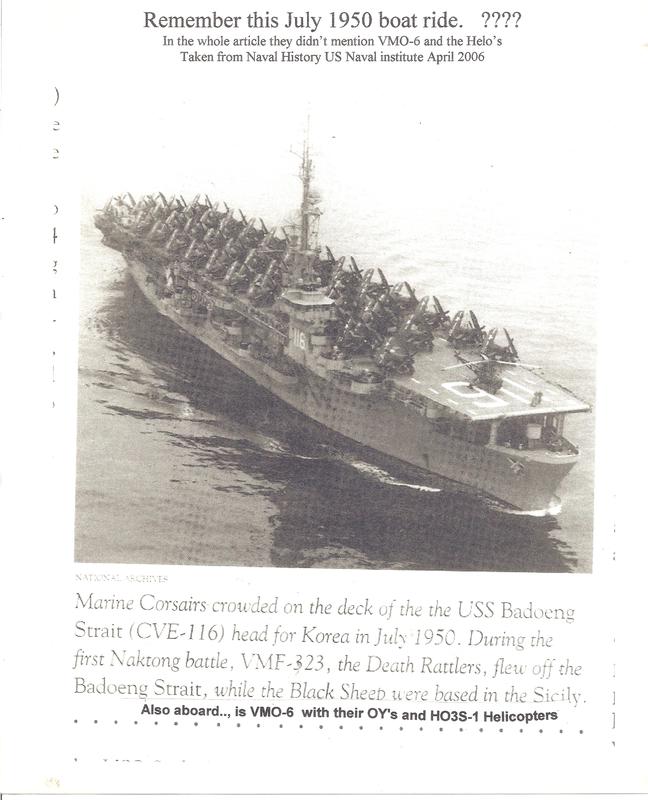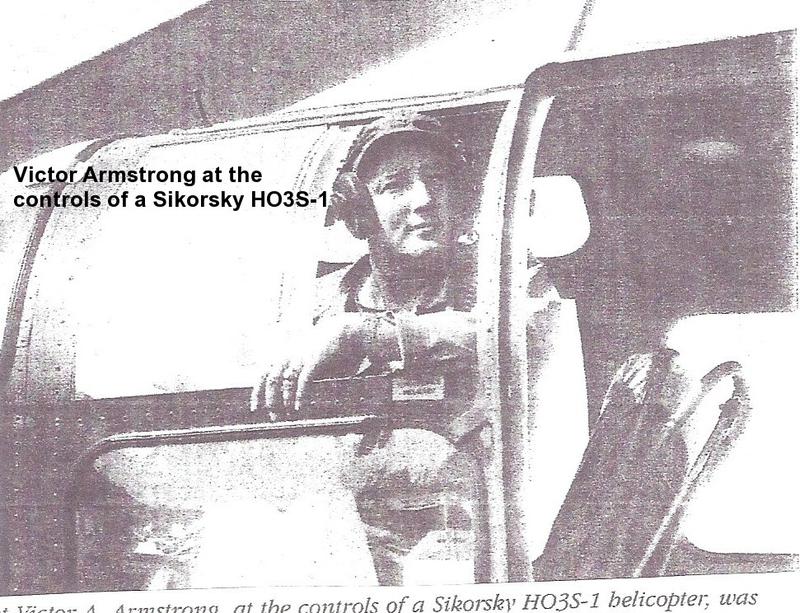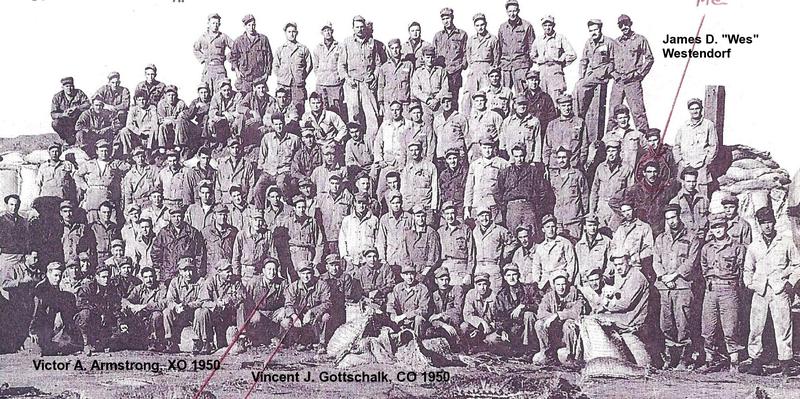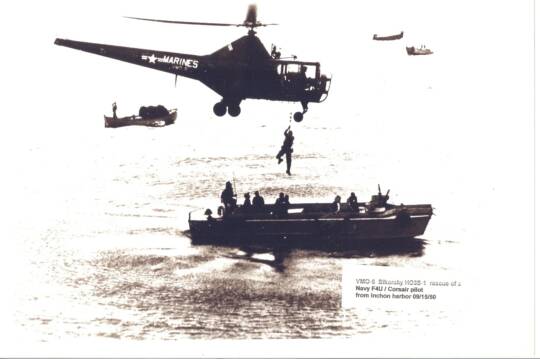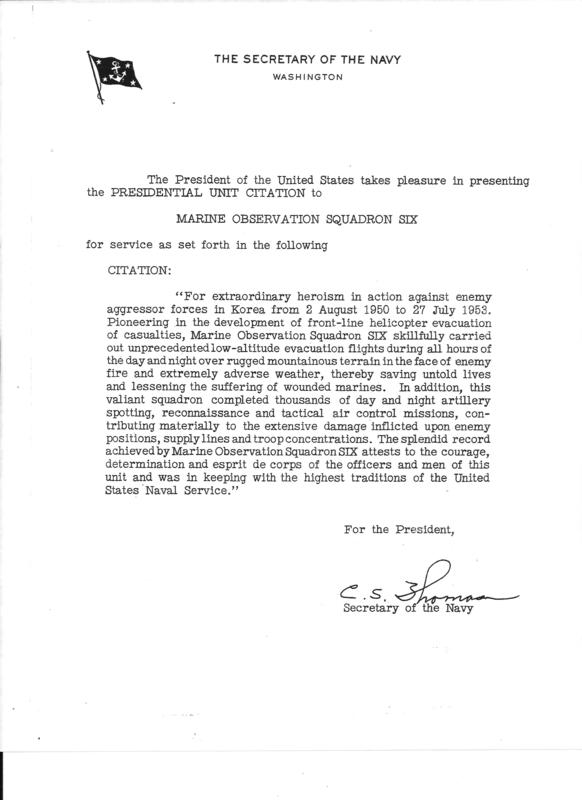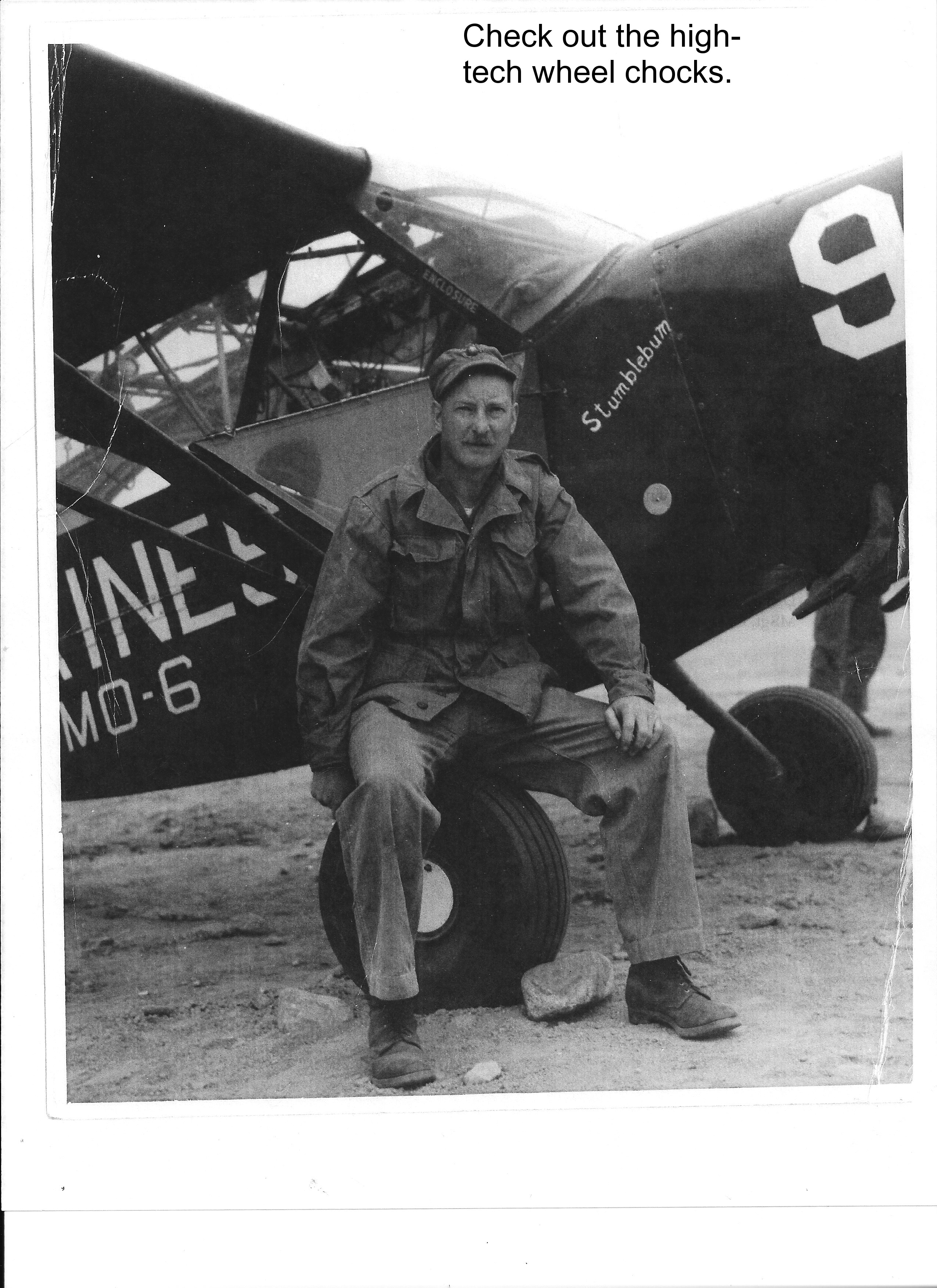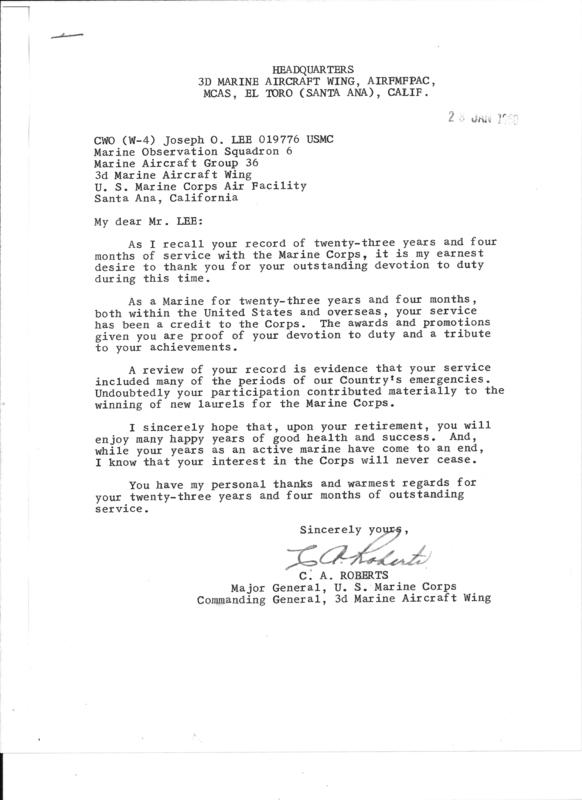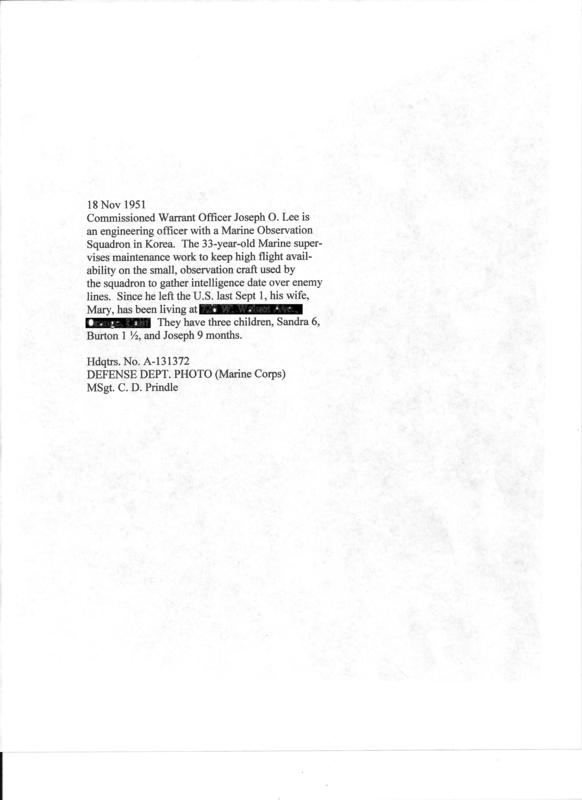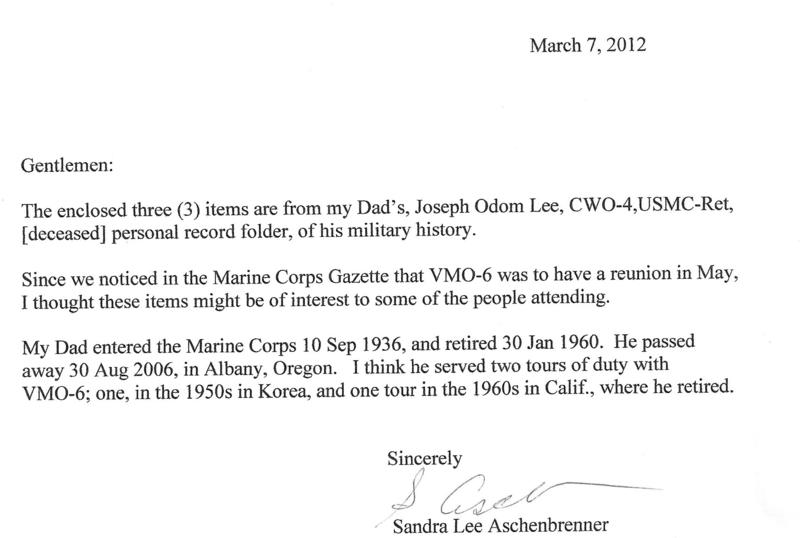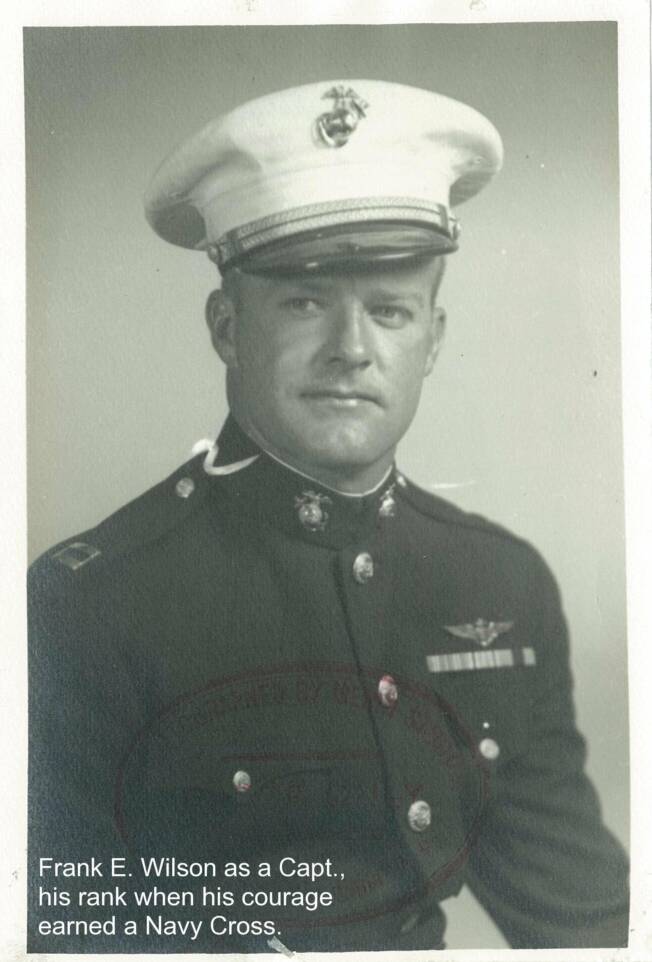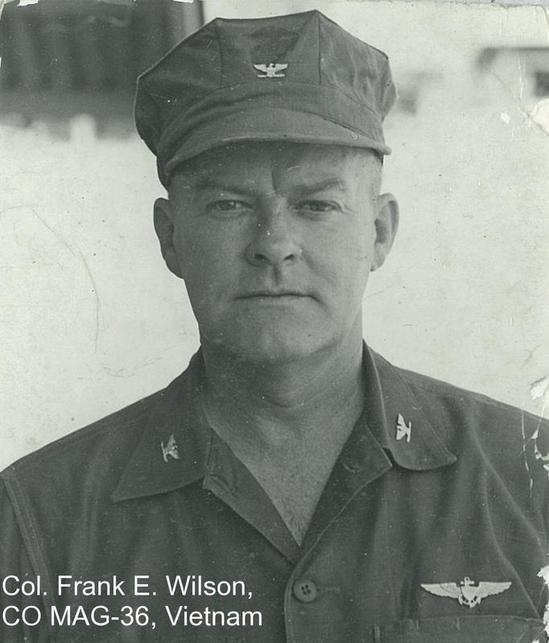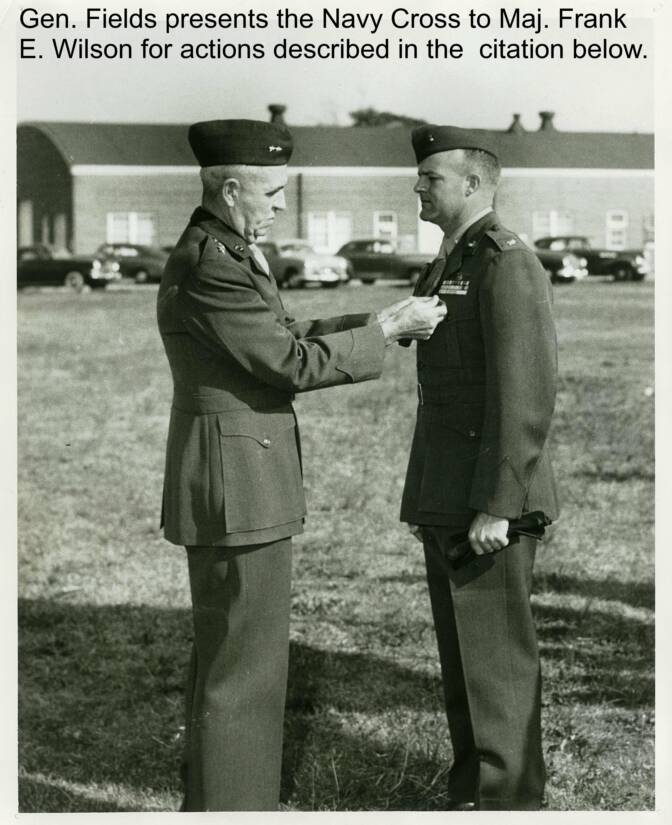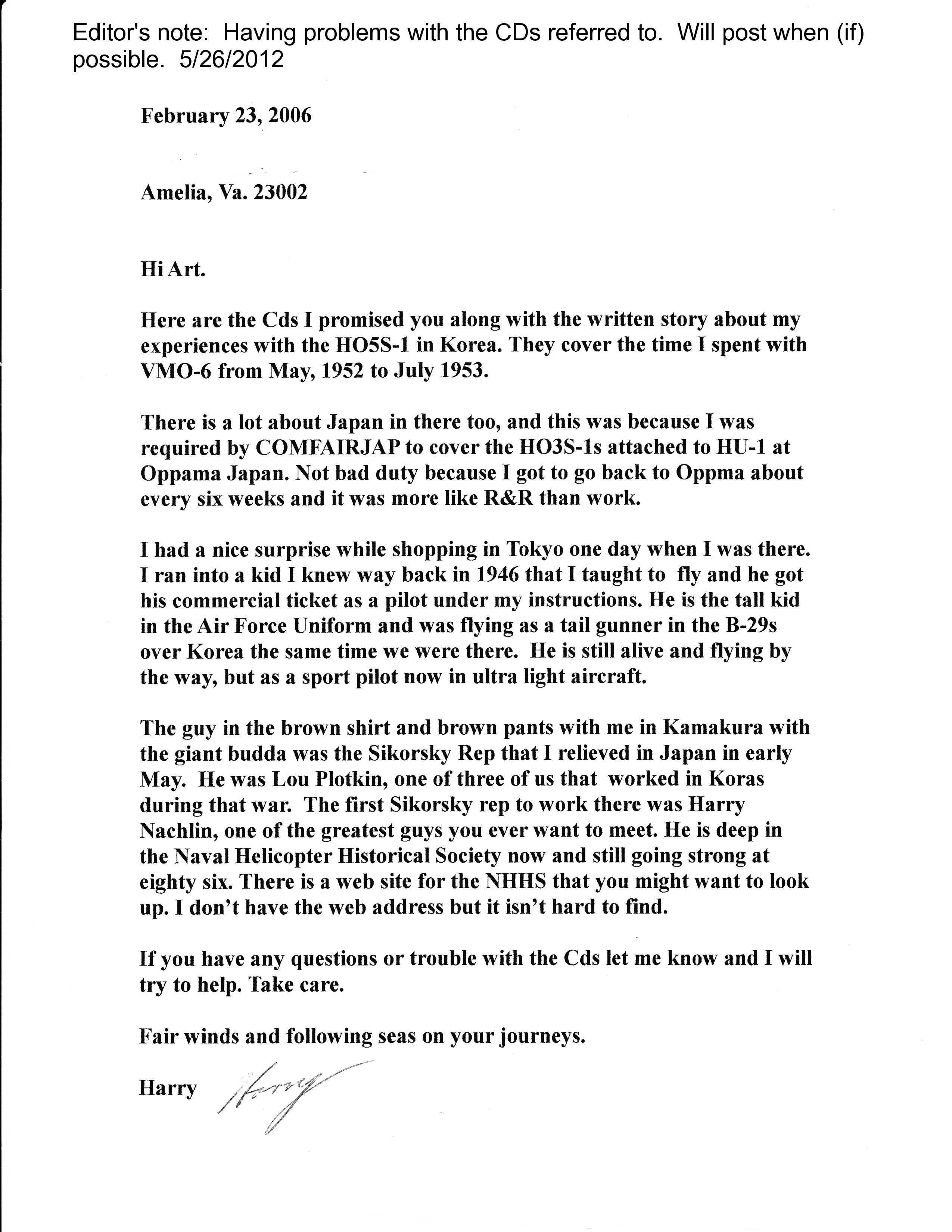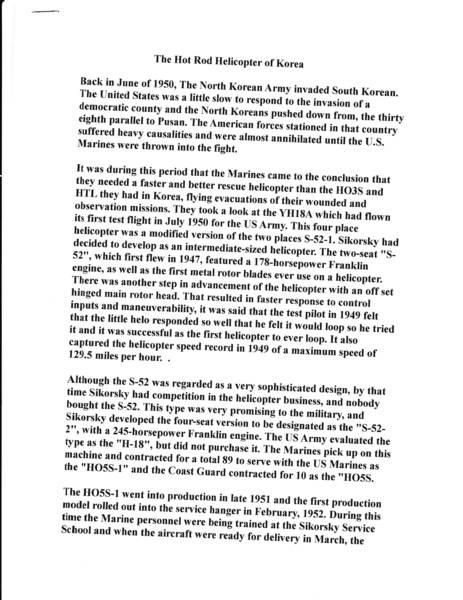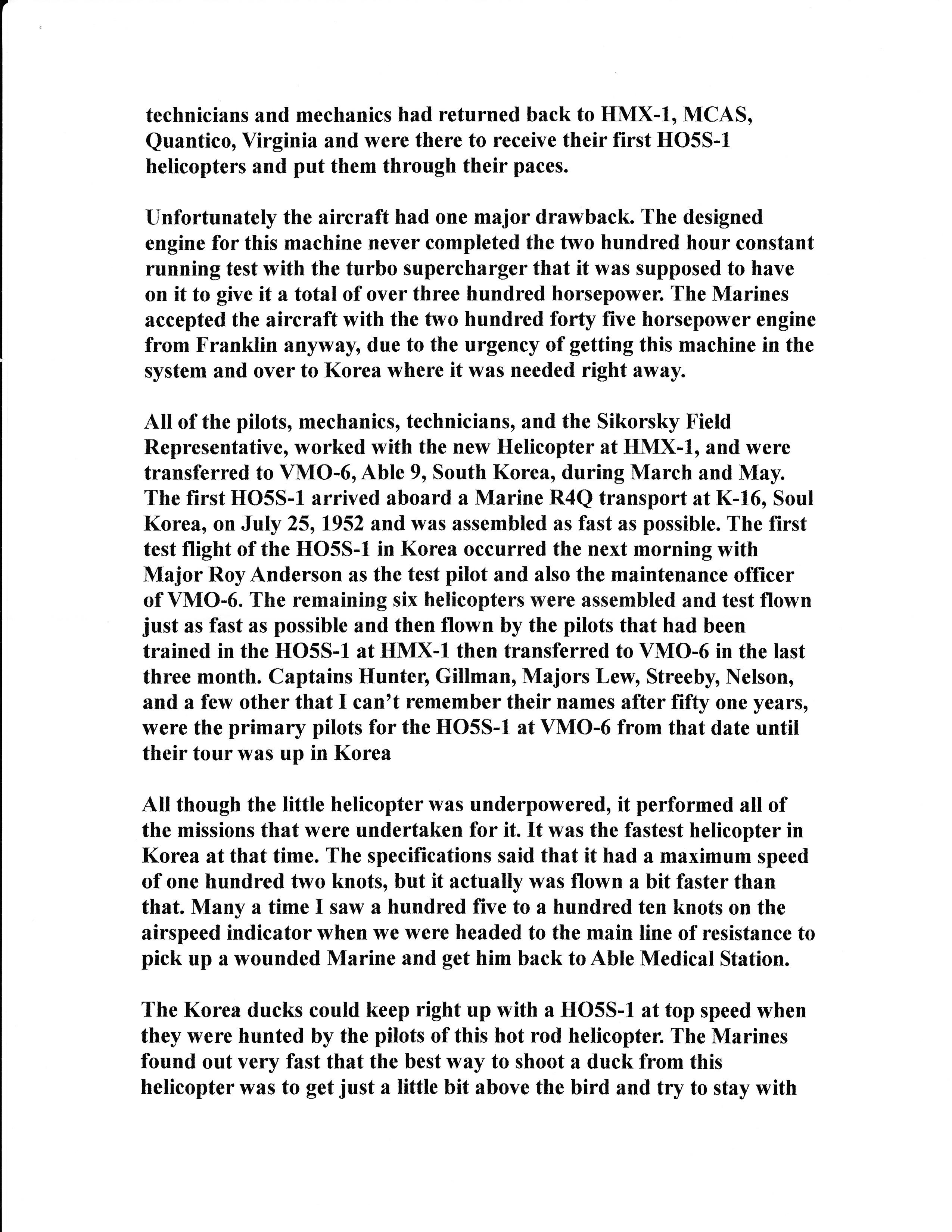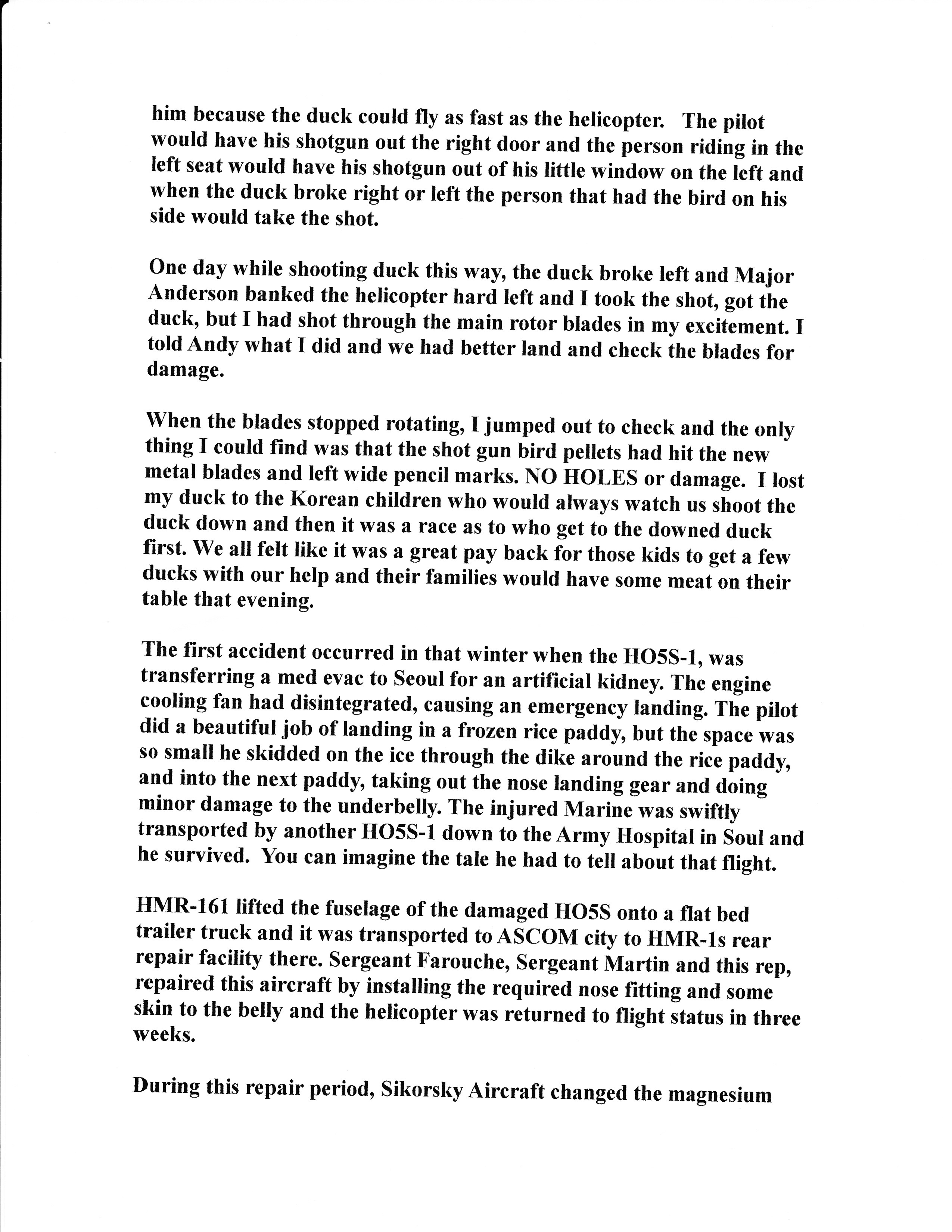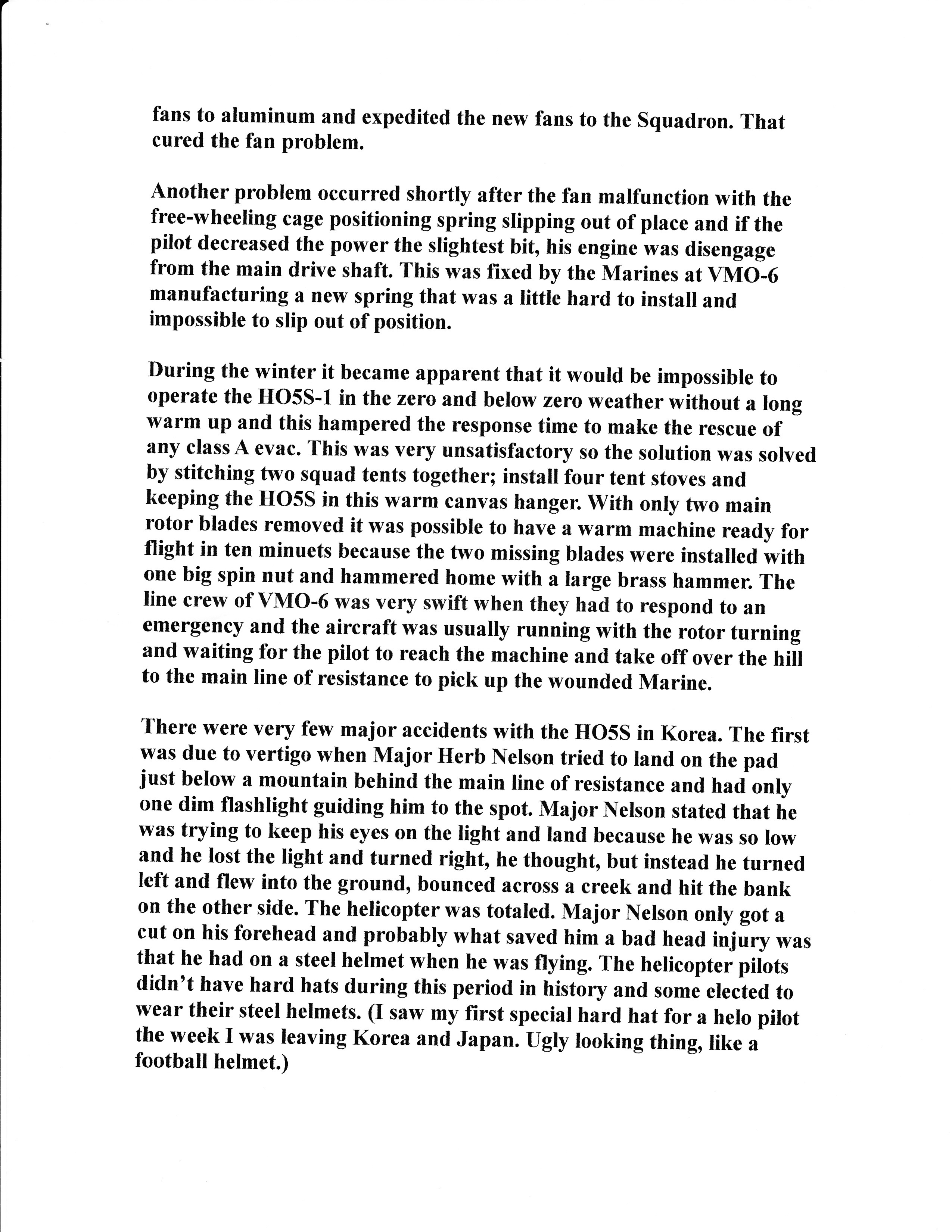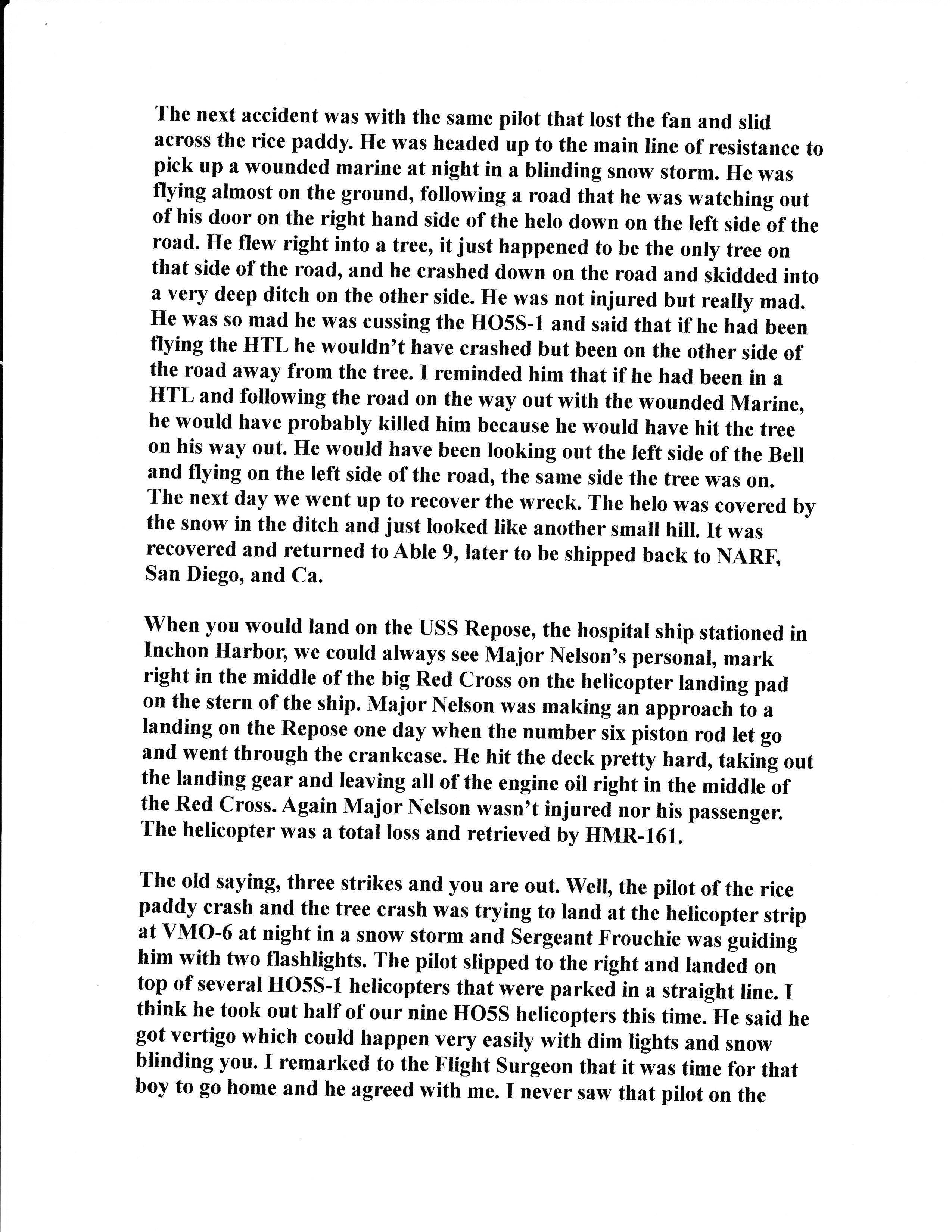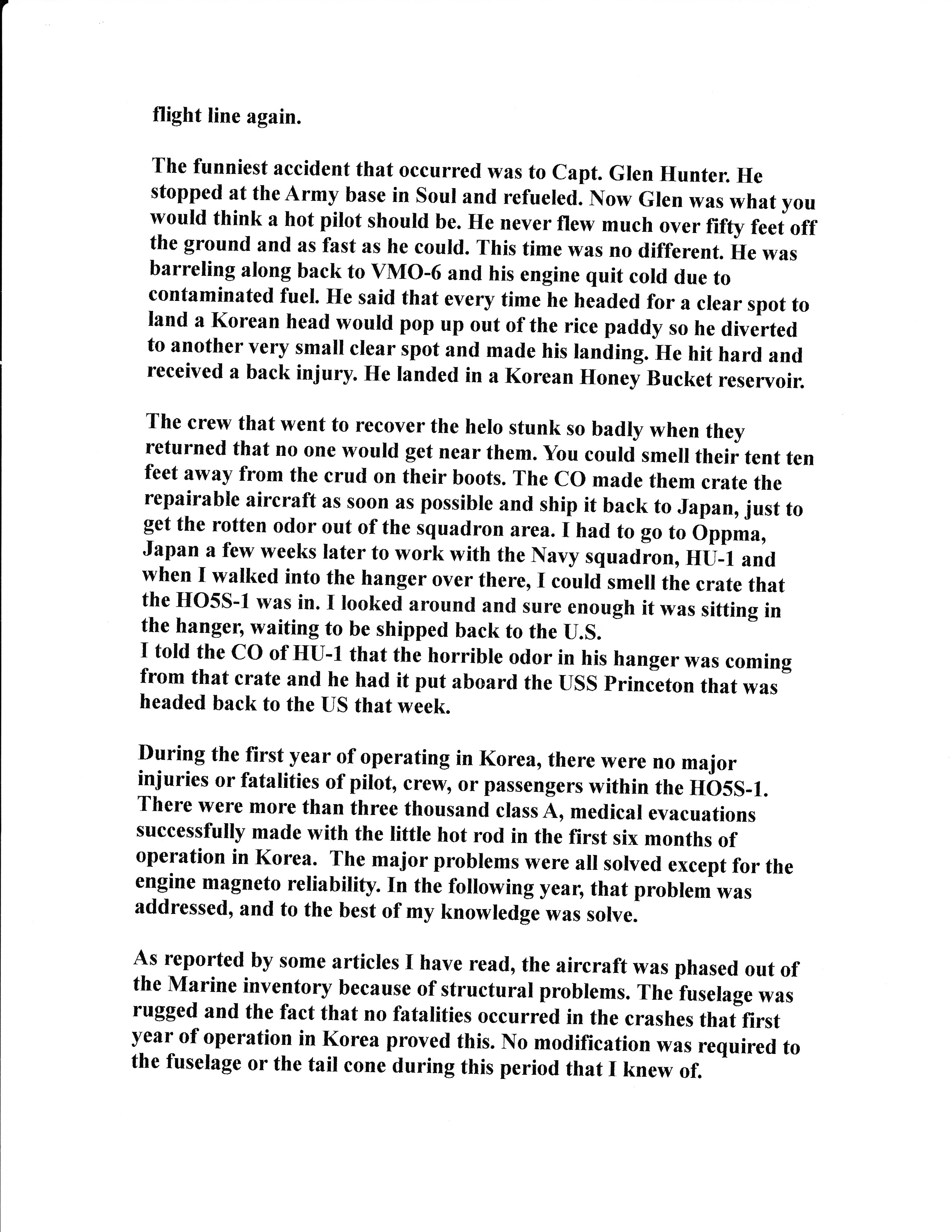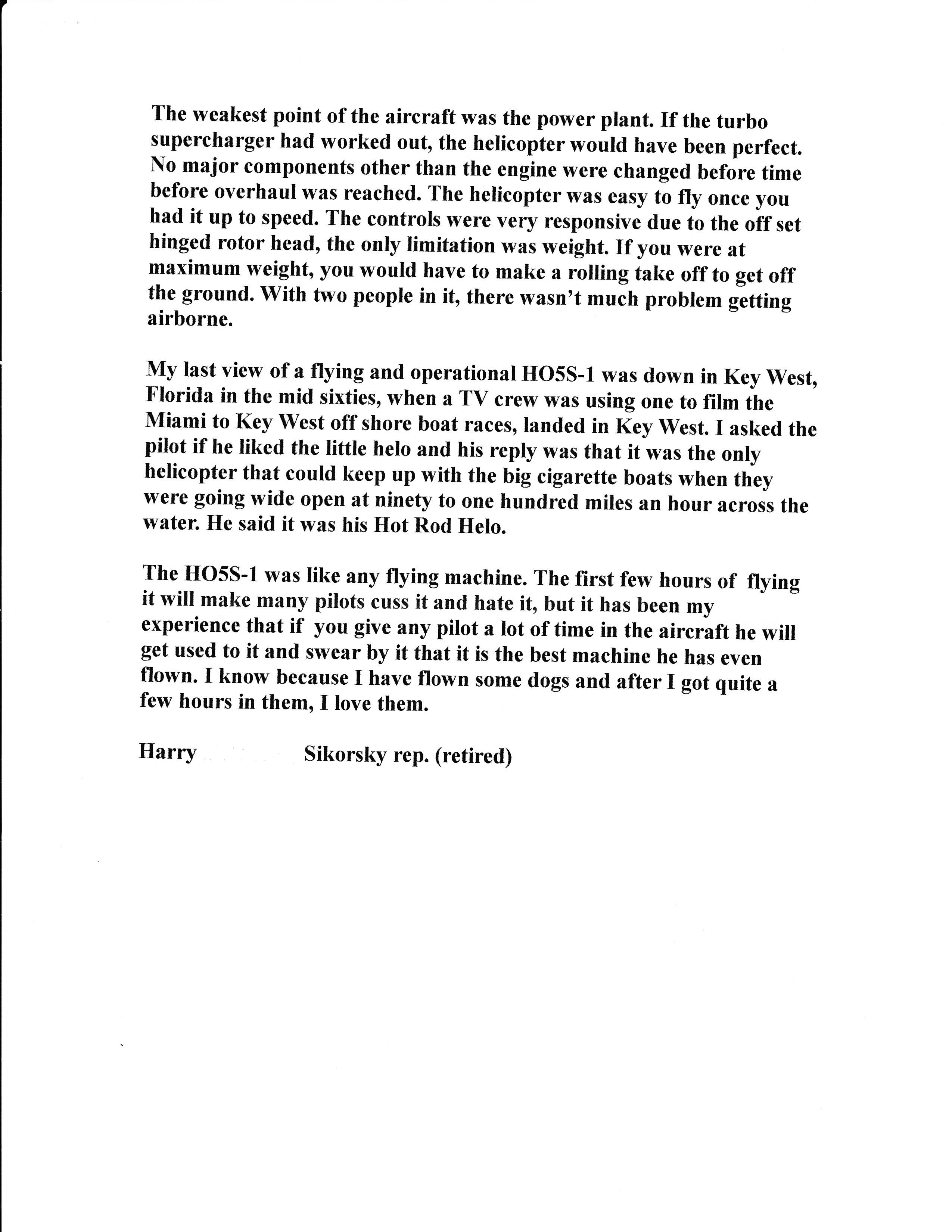Letter from a Korean War VMO-6 Squadron Member
VMO-6 Memorial Fund,
My name is Jim Westendorf. I believe that I am one of the few remaining members of the original contingent of VMO-6 members who went ashore at Pusan, S. Korea, 2 August 1950, serving as a helicopter mechanic, plane captain, and crew chief, previously of HMX-1, ('49-'50), Quantico, VA. As is known, VMO-6, a contingent of the 1st Provisional Marine Brigade, in which we then joined the first conflict of the Korean War, known as the Battle of the Pusan Perimeter. I was a member of VMO-6 throughout the first year of the Korean War, participating in the Inchon landing, the capture of Seoul (twice), thence on to the Wonson landing and the main airfield at Yonpo in October 1950, up to, and including the battle of the Chosin Reservoir, and operating out of the airstrip at Hagaru-ri and Koto-ri.
During the first year of the Korean conflict, we of VMO-6 operated the WWII Stinson light, fixed wing single engine OY-2 and the Sikorsky Observation type helicopter, the HO3S-1. In late December of 1950, we received our first Bell Helicopters, the HTL-3 and 4. VMO-6 is the very first U.S. Marine Corps helicopter squadron to introduce the helicopter into actual combat.
After the first and second spring offensive, early in the spring of 1951, I rotated home in May 1951 (having been promoted to the rank of corporal).
I and a few of my remaining fellow squadron mates will be pleased and gratified to know that the old VMO-6 squadron members.....both of the Korean War and those that participated in the war in Vietnam....up til the time this venerable old squadron had been decommissioned....but not to exclude those latter day rotor-head members of our present day, brother helicopter squadrons and serving members, all Pop-a-Smoke, yet serving afield, including family members and friends....have formed a committee and established a fund, in which we wish to contribute to elicit and collect contributions in which to complete the design, build, and erect in a suitable place....a monument in respect and honor of all members of VMO-6 from the time of its commissioning in 1920 to the time of its decommissioning in 1977.....who have given that last full measure of sacrifice for their country, their God, and their Corps.
Sincerely,
Jim “Wes” Westendorf
Many thanks and a big OOORAH! to Jim Westendorf for the following photos:
(Any and all comments to help build on photos up will be appreciated. Please email to dbushlow@me.com and put "VMO-6" in the subject line. Thanks. db)
First contingent of VMO-6. Kimpo, 1950
KOREA MEMORIES
Your contributed photos and stories
End Item
Submitted by Tom Constantine.
Col Ed John
Colorado Springs
CO 80918
Col John called me this aft. He told me that he was born January 28, 1922. In 1942 he enlisted in the Marine Corps and became a pilot, flying F4U Corsair aircraft in the western Pacific off Jeep Carriers. After WWII as a Capt he was assigned as the CO of VMO-6 and took the squadron into China. Believe he stated that they flew EOY-1 aircraft. Around this time USAF was attempting to downsize the USMC aircraft capability and the Marine Corps was ordered to shed pilots. So then Capt John was rifted to MSGT in 1949 and sent to avionics school to become an avionics NCO. Col John stated that he really enjoyed being a MSGT, and his avionics training, as it served him well later. At some point in time after 13 months of intensive avionics training MSGT John was transferred to a F4U squadron at El Toro. Upon his arrival, his CO told him, “ you might want to go down to the avionics shop, but I want you as a squadron pilot as well.” So MSGT John continued as a Naval Enlisted Pilot as well as NCOIC of avionics and began flying the F4U. At some point in time he was transferred from that billet and recommissioned as a 2nd Lt. and began flying F9F and later C-119 transports. In between various jobs he had become an embark officer as well, related to a deployment to Atsugi with F4U’s. Shortly thereafter he was promoted to major. At some point in time The Marine Corps became interested in Tactical Air Control in combat environments. Major John, with his technical knowledge in avionics was then assigned to Quantico as CO of an USMC R&D outfit to design and build air transportable radar units for TACC. Apparently after his great successes then Lt Col John had multiple commands of Marine control units doing standardization etc for Marine Control Squadrons. During an interlude Lt Col John was transferred to Danang Air Base as the CO of the H&MS and was charged with installing the Tactical Radar Control unit on Monkey Mountain. When Col John wanted to get some time in the left seat he flew flare missions in the R4D’s at night out of Danang. Later he was transferred from 1st MAW to Quantico and promoted to Colonel for his twilight tour as the CO of a school and retired in 1972. Thirty years of service. Capt to Master Sergeant to 2nd Lieutenant to Colonel. F4U Corsairs to Birddogs, back to Corsairs, to F9F’s to C-119’s to R4D flare ships. Okinawa, China, Korea, and Vietnam. He told me with a chuckle, “ They told me I would never get beyond major.”
Col John states he is feeling pretty good after turning 90 and wants to be at Quantico 17May.
Now that is a story.
End Item
END ITEM
The President of the United States of America takes pleasure in presenting the Navy Cross to Captain Frank E. Wilson (MCSN: 0-24941), United States Marine Corps, for extraordinary heroism in connection with military operations against an armed enemy of the United Nations while serving as a Helicopter Pilot in Marine Observation Squadron SIX (VMO-6), during the rescue of three downed airmen in enemy-held territory north of Hwachon Reservoir, Korea, on 13 April 1951. Although keenly aware that another helicopter had been shot down together with its two-man crew in an endeavor to rescue a downed pilot behind enemy lines, Captain Wilson unhesitatingly volunteered to fly his unarmed, extremely vulnerable aircraft into an area occupied by thousands of hostile troops in a brave attempt to bring back the three airmen, and carried out the mission alone to afford sufficient passenger space for the return journey. Flying at a dangerously low altitude through intense hostile ground fire, he skillfully maneuvered his aircraft into position over the men isolated in a deep ravine and, despite their frantic signals imploring him to leave the enemy-infested area, boldly lowered the hoist and hauled one of them into the helicopter. Realizing that further rescue attempts by this method were almost impossible in view of the turbulent winds and rugged terrain, Captain Wilson searched the area at tree-top level until he located a minute clearing and, although raked by fierce anti-aircraft and small-arms fire from the rapidly closing enemy troops, hovered with one wheel touching the uneven ground while the two remaining men climbed aboard the helicopter. Unable to gain sufficient altitude to climb over the high ridges enclosing the area, he flew a distance of approximately 15 miles through the narrow valley in the face of withering hostile machine-gun and anti-aircraft fire, returning safe to base in complete darkness with less than five minutes of fuel remaining. By his outstanding courage, brilliant airmanship and selfless efforts in behalf of others at the risk of his own life, Captain Wilson upheld the highest traditions of the United States Naval Service.
END ITEM
Hot Rod Helicopter
END ITEM
Click here to view videos submitted by Art Nelson. Use your browsers back button to return to this page.
